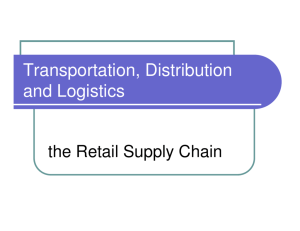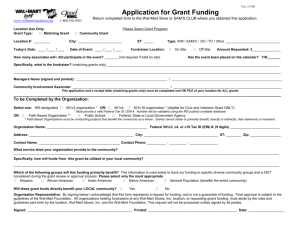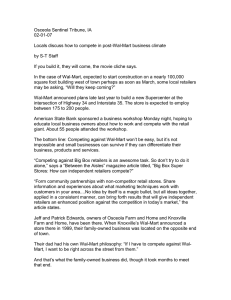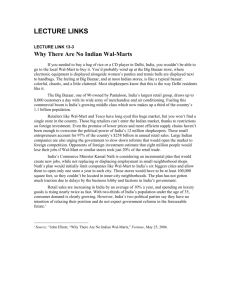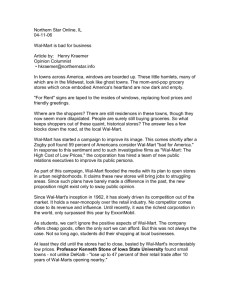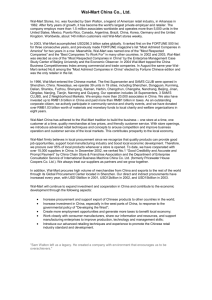The Retail Revolution - Western Carolina University
advertisement
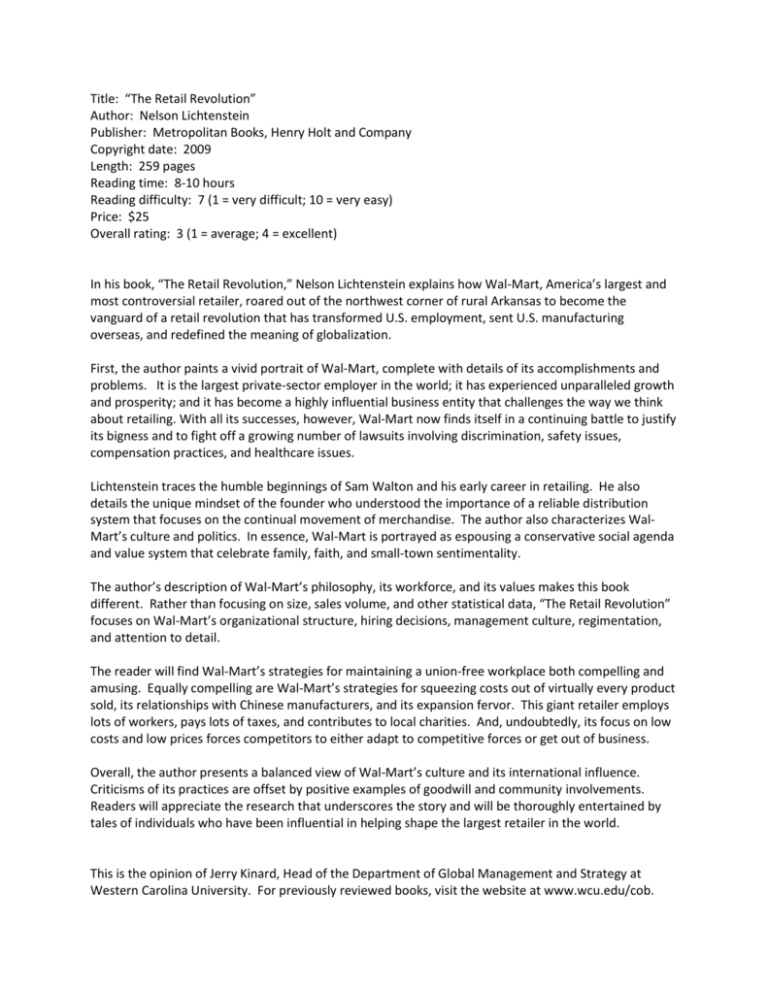
Title: “The Retail Revolution” Author: Nelson Lichtenstein Publisher: Metropolitan Books, Henry Holt and Company Copyright date: 2009 Length: 259 pages Reading time: 8-10 hours Reading difficulty: 7 (1 = very difficult; 10 = very easy) Price: $25 Overall rating: 3 (1 = average; 4 = excellent) In his book, “The Retail Revolution,” Nelson Lichtenstein explains how Wal-Mart, America’s largest and most controversial retailer, roared out of the northwest corner of rural Arkansas to become the vanguard of a retail revolution that has transformed U.S. employment, sent U.S. manufacturing overseas, and redefined the meaning of globalization. First, the author paints a vivid portrait of Wal-Mart, complete with details of its accomplishments and problems. It is the largest private-sector employer in the world; it has experienced unparalleled growth and prosperity; and it has become a highly influential business entity that challenges the way we think about retailing. With all its successes, however, Wal-Mart now finds itself in a continuing battle to justify its bigness and to fight off a growing number of lawsuits involving discrimination, safety issues, compensation practices, and healthcare issues. Lichtenstein traces the humble beginnings of Sam Walton and his early career in retailing. He also details the unique mindset of the founder who understood the importance of a reliable distribution system that focuses on the continual movement of merchandise. The author also characterizes WalMart’s culture and politics. In essence, Wal-Mart is portrayed as espousing a conservative social agenda and value system that celebrate family, faith, and small-town sentimentality. The author’s description of Wal-Mart’s philosophy, its workforce, and its values makes this book different. Rather than focusing on size, sales volume, and other statistical data, “The Retail Revolution” focuses on Wal-Mart’s organizational structure, hiring decisions, management culture, regimentation, and attention to detail. The reader will find Wal-Mart’s strategies for maintaining a union-free workplace both compelling and amusing. Equally compelling are Wal-Mart’s strategies for squeezing costs out of virtually every product sold, its relationships with Chinese manufacturers, and its expansion fervor. This giant retailer employs lots of workers, pays lots of taxes, and contributes to local charities. And, undoubtedly, its focus on low costs and low prices forces competitors to either adapt to competitive forces or get out of business. Overall, the author presents a balanced view of Wal-Mart’s culture and its international influence. Criticisms of its practices are offset by positive examples of goodwill and community involvements. Readers will appreciate the research that underscores the story and will be thoroughly entertained by tales of individuals who have been influential in helping shape the largest retailer in the world. This is the opinion of Jerry Kinard, Head of the Department of Global Management and Strategy at Western Carolina University. For previously reviewed books, visit the website at www.wcu.edu/cob.


